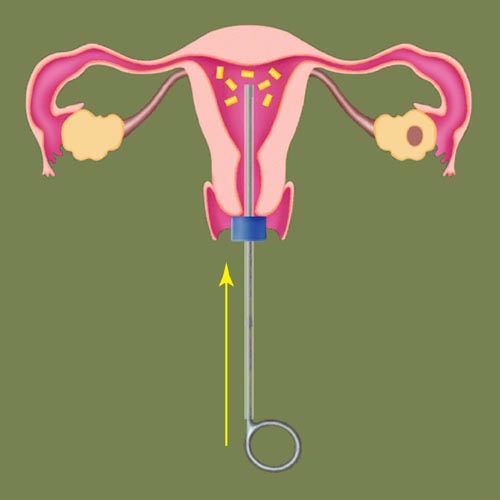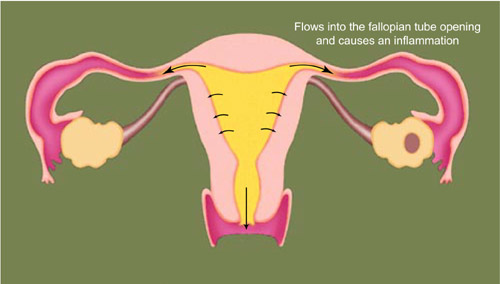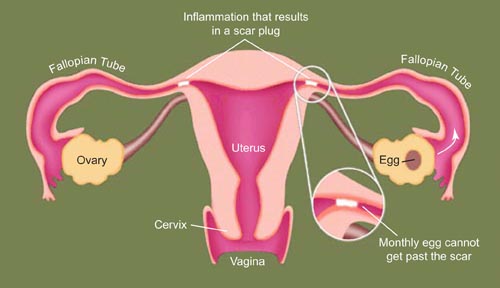How QS Works
Make a Donation
Call to Action
How QS Works
How is the procedure done? A healthcare provider (doctor, nurse or midwife) places seven small pellets of quinacrine up through the vagina and into the uterus with an inserter, immediately following the woman’s monthly period.
What happens to the quinacrine? The pellets dissolve in half an hour and a small portion of the liquid quinacrine flows a short distance into the fallopian tubes. This causes inflammation of the tubal lining. About one-third of the quinacrine exits the uterus through the vagina. And about two-thirds is absorbed by the lining of the uterus and passes into the bloodstream, and is eliminated from the body within 30 days.
What is the result? Over the next three months, scar tissue is formed. The tubes are closed. The egg and sperm are unable to meet. Pregnancy is prevented.
When are insertions done? QS must be done 6-12 days after menstruation starts. To increase the chances of success, there must be no blood in the uterus during these insertions.
How safe is QS? The drug quinacrine was originally developed to prevent and treat malaria. Over the past 70 years, it has been prescribed for more than 100 million people for those purposes. In the 1970s, it was discovered that quinacrine could be used to achieve permanent contraception in women. Studies suggest that QS is much safer and has far fewer complications than surgical sterilization. In fact, surgical sterilization has 50 times as many serious complications as QS. Tubal (ectopic) pregnancy is rare, but can occur. In fact, ectopic pregnancy occurs less often in QS users than in women who use no contraception. A woman should return to a doctor or clinic if pain makes her suspect an ectopic pregnancy.
Does QS ever fail? Yes. QS can fail if the tubes are not completely blocked after two insertions or if a new channel grows through the scar. Over the years, techniques of insertion have improved. It is now estimated that fewer than 4 out of 100 women will become pregnant within 10 years after having completed the two-insertion QS procedure. The effectiveness of QS is comparable to many of the currently available surgical methods.
What are the side effects of QS? Less than half of all women report experiencing at least one adverse effect. If there is a side effect, it usually goes away within a few hours to a few days. Here is a list of the most common side effects, and the percentage of women who get them:
| Symptoms (usually brief) | Percentage of Women who experience symptoms |
| Menstrual pattern change* | 20-29% |
| Lower abdominal pain | 9-25% |
| Headache & dizziness | 9-20% |
| Backache | 1-21% |
| Vaginal itching or irritation | 1-23% |
| Discharge | 5-16% |
| Fever | 9-10% |
| Pain during urination | Less than 1% |
| Pain during sex | Less than 1% |
*Some women have menstrual changes. This means that they either do not have their period or there is a decrease or increase in the amount of flow or in the number of days it lasts. This usually occurs no more than a few months, but in rare cases, it may last a year.
Does QS protect women against sexually transmitted diseases (STDs) and HIV/AIDS? No.
| Before having a QS procedure the patient should tell her healthcare provider |
|
| What are the main disadvantages of QS? |
|
| What are the main advantages of QS? |
|
Will the patient be sterile immediately? No. Not for 3 months.
Will the patient be sterile after one insertion? No. Research has shown that women who have only one insertion are twice or three times as likely to become pregnant as women who have two insertions.
What will happen if the patient cannot return for her second insertion after one month? If she cannot return for the second insertion, the patient should continue her contraception until she can return to the clinic. If she does not return, her QS procedure is not complete and therefore, there is a higher chance she will become pregnant.




